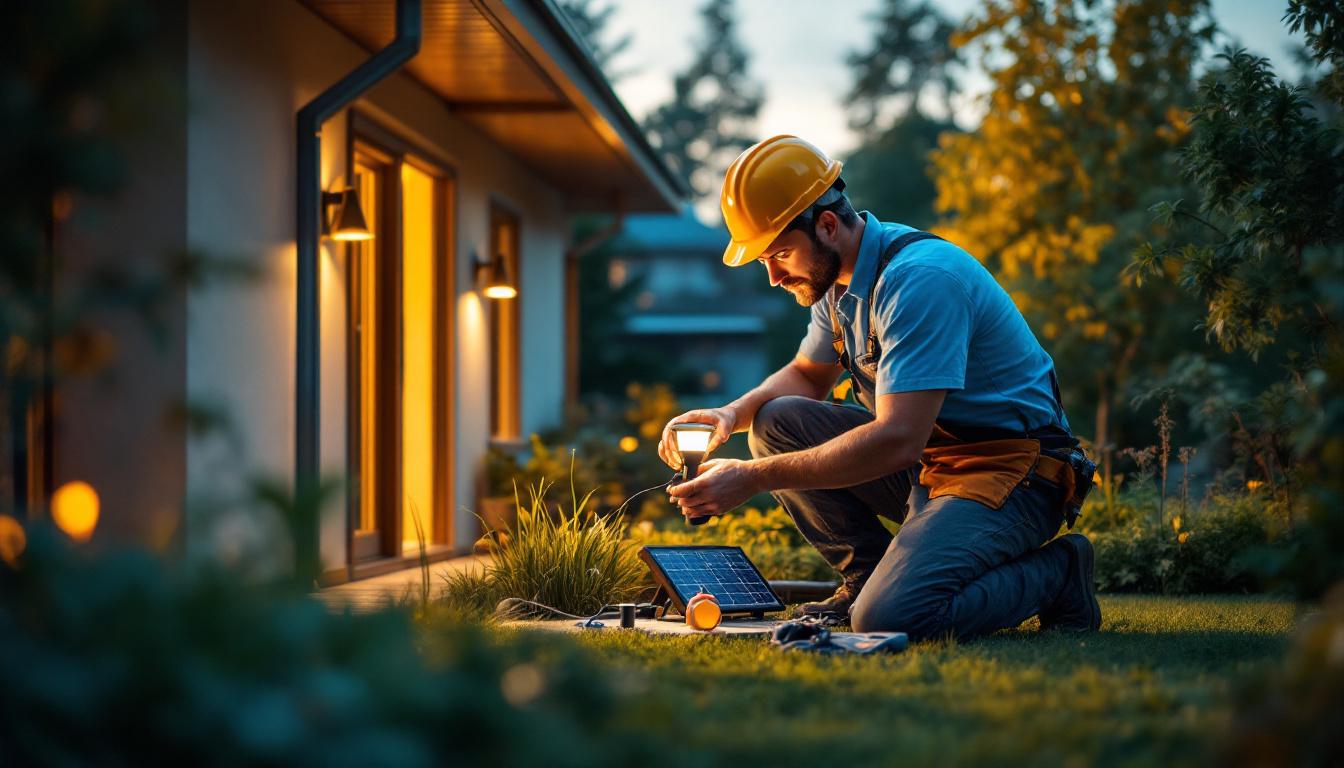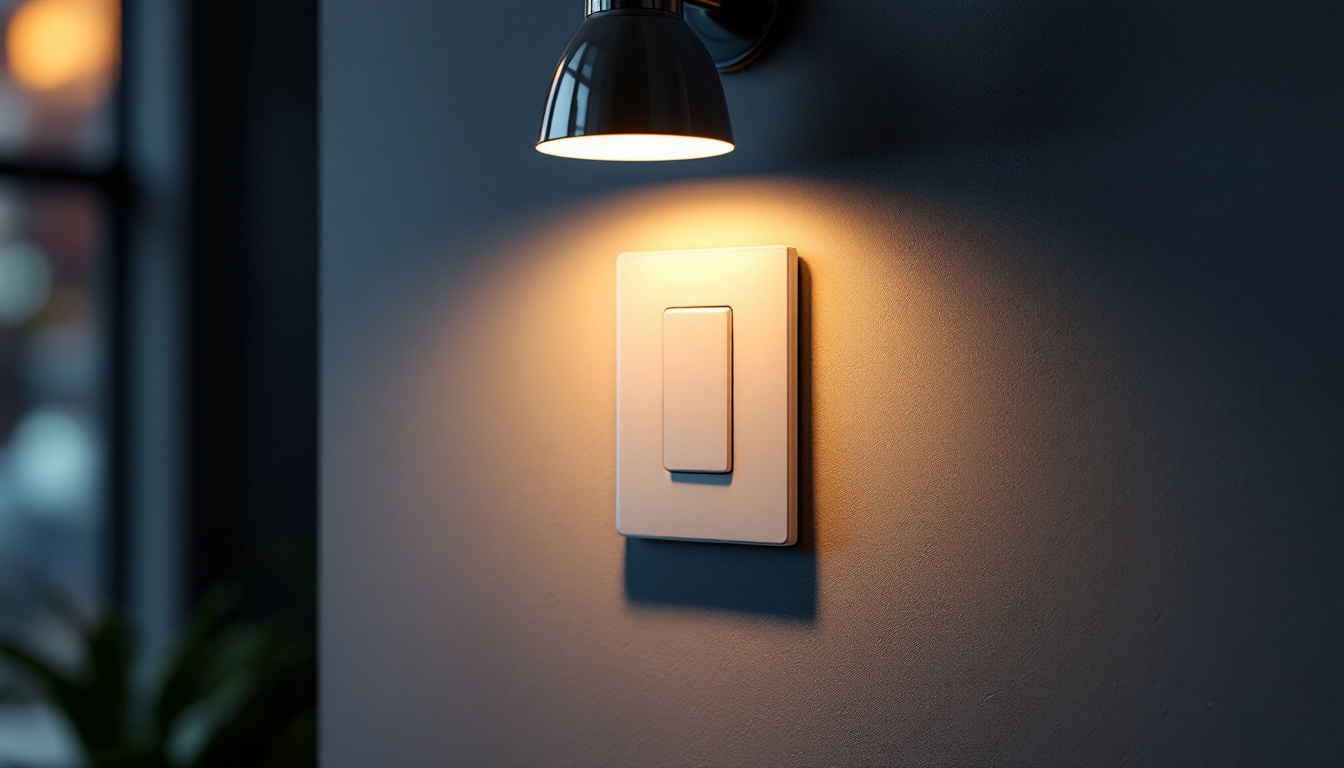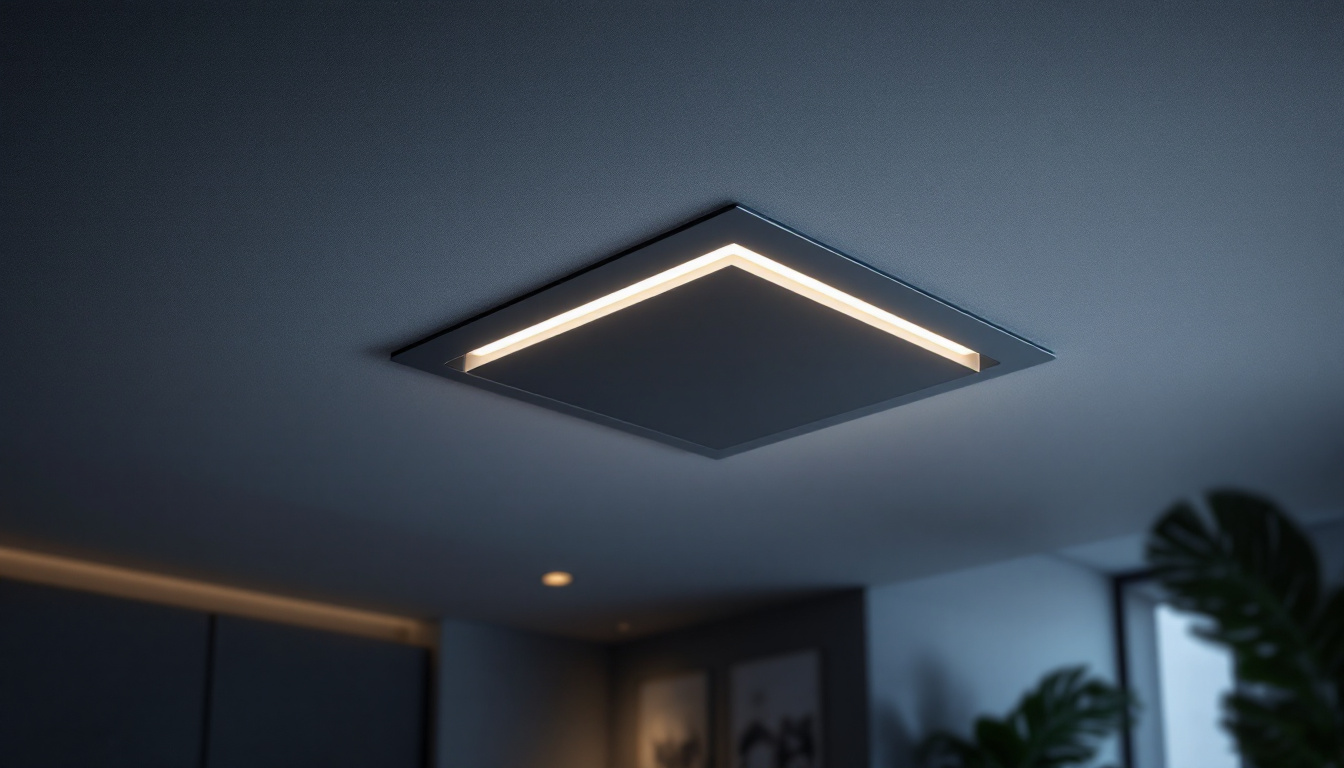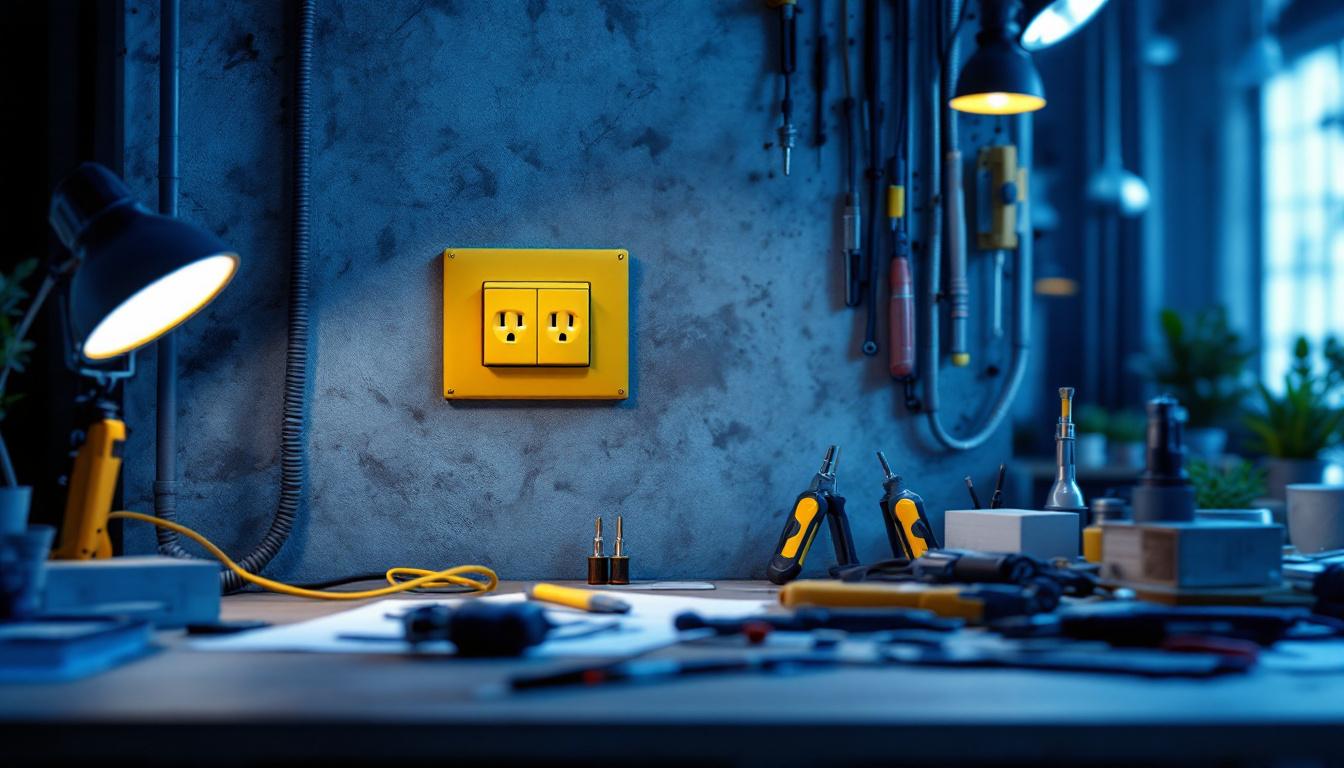
As the demand for sustainable and energy-efficient lighting solutions continues to grow, solar-powered LED lights have emerged as a popular choice among homeowners and businesses alike. However, for lighting contractors, navigating the complexities of solar-powered LED installations can be challenging. This guide aims to highlight common mistakes that contractors should avoid when working with solar-powered LED lights, ensuring successful installations and satisfied clients.
Before diving into the common pitfalls, it is essential to grasp the fundamentals of solar-powered LED technology. These systems harness sunlight to generate electricity, which powers LED fixtures. The integration of solar panels, batteries, and LED lights creates a self-sustaining lighting solution that can significantly reduce energy costs. This innovative technology not only promotes sustainability but also aligns with global efforts to reduce carbon footprints, making it an attractive option for environmentally conscious consumers.
Solar-powered LED lights are particularly advantageous in areas where traditional electrical wiring is impractical or too costly. They are often used in outdoor settings such as gardens, pathways, and parking lots, providing illumination without the need for extensive infrastructure. Additionally, these systems can be deployed in remote locations, such as camping sites or rural communities, where access to the electrical grid is limited. Their versatility and ease of installation make them a popular choice for both residential and commercial applications.
To effectively install and maintain solar-powered LED lights, contractors must be familiar with their key components. These typically include solar panels, rechargeable batteries, LED fixtures, and charge controllers. Each component plays a crucial role in the overall functionality and efficiency of the system. For example, solar panels convert sunlight into electrical energy, while the charge controller regulates the flow of electricity to prevent overcharging the batteries, ensuring longevity and reliability.
Understanding how these components work together can help contractors troubleshoot issues and optimize performance. For instance, selecting the right battery type and capacity is vital for ensuring that the lights operate effectively during periods of low sunlight. Moreover, the orientation and angle of the solar panels are critical factors that influence energy absorption; panels should ideally be positioned to maximize exposure to sunlight throughout the day. Additionally, advancements in LED technology have led to the development of more energy-efficient bulbs that require less power, further enhancing the overall efficiency of solar-powered lighting systems.
Even seasoned lighting contractors can fall into traps when working with solar-powered LED lights. Here are some of the most common mistakes to avoid:
A thorough site assessment is crucial before installing solar-powered LED lights. Contractors must evaluate factors such as sunlight exposure, shading from trees or buildings, and the overall landscape. Failing to conduct a proper assessment can lead to poor performance and customer dissatisfaction.
For example, if solar panels are installed in a shaded area, they may not receive enough sunlight to charge effectively, resulting in dim or non-functional lights. Therefore, taking the time to analyze the site conditions can save contractors from costly rework and enhance the longevity of the installation. Additionally, understanding the seasonal variations in sunlight can also be beneficial; certain areas may experience significant changes in daylight hours throughout the year, which can affect the performance of solar-powered systems. By conducting a comprehensive assessment, contractors can not only optimize the placement of lights but also provide clients with realistic expectations regarding performance throughout different seasons.
Another common mistake is neglecting to consider battery specifications. The battery is a critical component that stores energy generated by the solar panels. Contractors should ensure that the battery capacity aligns with the energy demands of the LED lights.
Using an undersized battery can lead to frequent failures, especially during extended periods of cloudy weather. Conversely, an oversized battery may increase costs unnecessarily. Understanding the energy consumption of the LED fixtures and selecting a compatible battery is essential for optimal performance. Furthermore, contractors should also consider the battery’s lifespan and maintenance requirements. Some batteries may require regular monitoring and maintenance to ensure they operate efficiently, while others may have a longer lifespan but come at a higher initial cost. By educating themselves about the various battery technologies available, contractors can make informed decisions that balance performance, cost, and longevity.
Many contractors may overlook local regulations and codes related to solar installations. Compliance with these regulations is crucial to avoid fines and ensure the safety of the installation. It is advisable to familiarize oneself with local guidelines regarding solar panel placement, electrical connections, and safety standards.
Additionally, some regions may have specific requirements for permits or inspections. Ensuring compliance not only protects the contractor but also builds trust with clients who expect professional and lawful installations. It is also worth noting that local regulations can sometimes offer incentives for using renewable energy sources, such as tax credits or rebates. By staying informed about these opportunities, contractors can provide added value to their clients while also enhancing their own business prospects. Engaging with local authorities and industry groups can further help contractors stay updated on any changes in legislation that may impact their work.
Selecting the appropriate LED fixtures is a critical aspect of any solar-powered lighting project. The wrong choice can lead to inefficiencies and unsatisfactory results. Here are some key considerations:
Lumen output is a measure of brightness and is a crucial factor when choosing LED fixtures. Contractors must assess the intended use of the lighting—whether for security, ambiance, or task lighting—and select fixtures that provide adequate lumens for the specific application.
For instance, pathway lighting may require lower lumen output compared to security lighting, which needs to be brighter to deter intruders. Understanding the client’s needs and the environment will guide the selection of appropriate fixtures.
Color temperature affects the ambiance and functionality of the lighting. LED lights are available in various color temperatures, ranging from warm white to cool daylight. Contractors should consider the aesthetic preferences of the client and the intended use of the space when selecting the color temperature.
For example, warm white lights may create a cozy atmosphere for outdoor dining areas, while cooler temperatures may be more suitable for task-oriented spaces like workshops or garages. Matching the color temperature to the environment enhances the overall user experience.
Proper installation is vital for the success of solar-powered LED lighting systems. Here are best practices that contractors should follow:
Ensuring that solar panels and LED fixtures are securely mounted is essential for their longevity and performance. Contractors should use appropriate mounting hardware and techniques to withstand environmental factors such as wind and rain.
Loose or improperly secured fixtures can lead to misalignment and reduced efficiency. Regular inspections and maintenance should also be part of the contractor’s routine to ensure that all components remain securely in place.
Positioning solar panels for maximum sunlight exposure is critical. Contractors should avoid placing panels in shaded areas or at angles that do not capture sufficient sunlight. Ideally, panels should be installed at a tilt that allows for optimal solar gain throughout the year.
Additionally, regular cleaning of the solar panels is necessary to remove dirt and debris that can obstruct sunlight. Establishing a maintenance schedule can help ensure that the panels operate at peak efficiency.
Part of a contractor’s role is to educate clients about the benefits and limitations of solar-powered LED lights. This education can help manage expectations and foster a positive relationship between the contractor and the client.
Clients often choose solar-powered LED lights for their energy-saving potential. Educating them about how these systems work, including the role of solar panels and batteries, can enhance their understanding and appreciation of the investment.
Providing information on potential savings on electricity bills and the environmental benefits of using renewable energy can also help clients feel more confident in their decision.
While solar-powered LED lights require less maintenance than traditional lighting systems, clients should be informed about the necessary upkeep. This includes cleaning solar panels, checking battery health, and ensuring that fixtures remain securely mounted.
By setting clear expectations regarding maintenance, contractors can prevent misunderstandings and ensure that clients are satisfied with their lighting solutions over time.
The solar-powered LED lighting industry is continually evolving, with new technologies and trends emerging. Staying informed about these developments can give contractors a competitive edge in the market.
Smart lighting technology is becoming increasingly popular, allowing users to control their lighting systems remotely via smartphones or smart home devices. Integrating solar-powered LED lights with smart technology can enhance convenience and energy efficiency.
Contractors should explore options for incorporating smart features into their installations, such as motion sensors, dimmers, and programmable timers. These features can provide added value to clients and differentiate contractors in a competitive market.
Advancements in battery technology are also shaping the future of solar-powered LED lighting. Newer battery types, such as lithium-ion, offer improved performance, longer lifespans, and faster charging times compared to traditional lead-acid batteries.
Contractors should stay updated on the latest battery technologies to offer clients the most efficient and reliable options available. Understanding the benefits and limitations of different battery types can also aid in making informed recommendations during the selection process.
Solar-powered LED lights present a valuable opportunity for lighting contractors to provide sustainable and cost-effective solutions to their clients. By avoiding common mistakes, understanding the technology, and staying informed about industry trends, contractors can enhance their expertise and deliver exceptional results.
Ultimately, a successful installation not only meets the client’s needs but also contributes to a more sustainable future. By prioritizing education, quality, and compliance, contractors can build a strong reputation in the growing market of solar-powered lighting solutions.
Ready to elevate your lighting projects with the best solar-powered LED solutions? At LumenWholesale, we provide lighting contractors like you with spec-grade, high-quality products at unbeatable wholesale prices. Say goodbye to local distributor markups and hello to a vast selection of reliable lighting that meets the highest industry standards. With free shipping on bulk orders, you can stock up on premium lighting without worrying about hidden fees or compromises. Make your next installation a shining example of sustainability and cost-efficiency. Discover the perfect blend of quality, affordability, and convenience at LumenWholesale – Wholesale Lighting at the Best Value.

Discover why LED emergency lights are essential for any lighting project.

Discover why the humble wall switch is often overlooked yet crucial in lighting projects.

Discover the ultimate guide for lighting professionals with our essential checklist for square recessed lights.

Discover how heavy duty outlets can revolutionize your lighting projects by boosting efficiency and reliability.